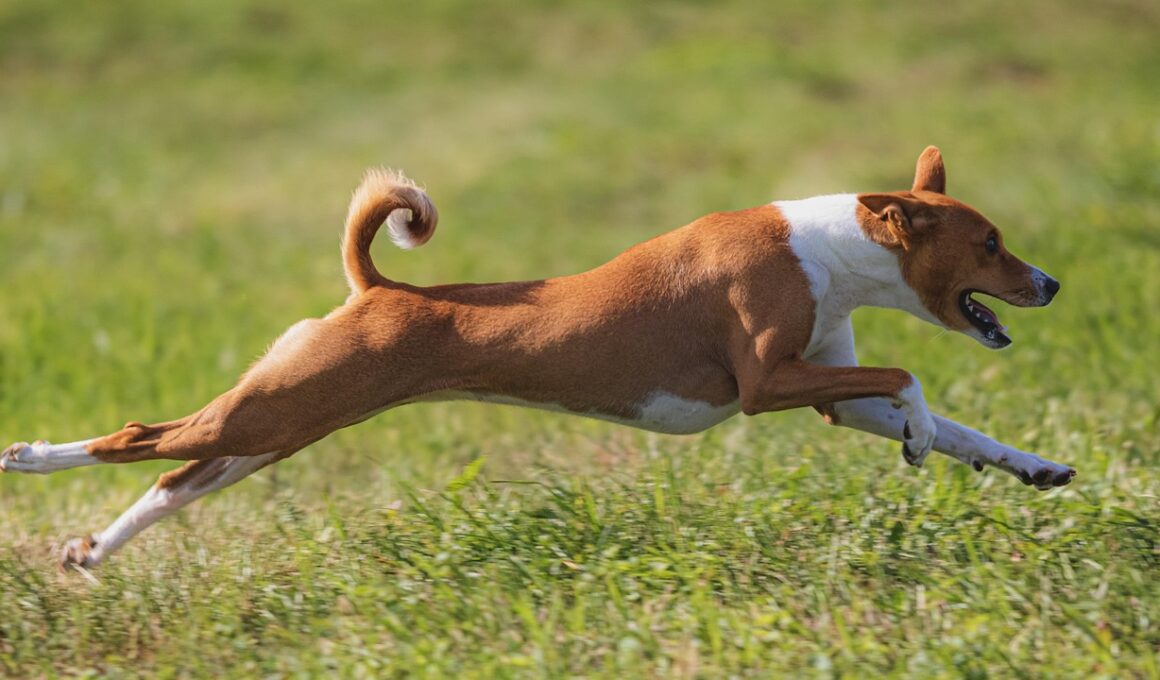Dog Parks 101: Introducing Your Dog to a New Social Setting
Introducing your dog to a dog park can be exhilarating. Understanding the environment beforehand is essential for a positive experience. Start by choosing the right time — early in the morning or later afternoon often sees fewer crowds. This way, your dog can acclimate comfortably without feeling overwhelmed. Also, consider visiting the park beforehand, observing the dynamics among dogs and their owners. This allows you to gauge temperament, play styles, and more. When you finally bring your dog, ensure they are on a leash initially. A leash helps you maintain control, easing both your nerves and those of other park-goers. Remember these steps: watch for signs of anxiety in your dog, such as barking or hesitation. Remaining calm and relaxed will help your dog feel secure. Additionally, teaching basic commands beforehand can help. Commands like “sit” and “stay” will ensure safety when introducing your dog to new friends. Pack your dog’s favorite toy to make them feel at home in the new environment. Lastly, always have water available for hydration. Hydration is crucial when they are on the move with enthusiasm.
Understanding Dog Socialization
Socializing your dog in new environments like parks enhances their confidence. This process is crucial to their overall development and happiness. It shapes how they interact not only with people but also with other animals. Start early; puppies are generally more adaptable than older dogs. Aim to expose your dog to varied sounds, sights, and smells that a park offers. This can help them become well-adjusted and reduce stress and anxiety in various situations. Monitoring interactions during this time is vital. If your dog reacts negatively, consider similar-sized dogs first, keeping your dog at a safe distance initially. Celebrate any positive interactions, providing praise and rewards. Keep sessions short to avoid overstimulation, as fatigue can lead to unusual behaviors. If necessary, take breaks to allow your dog to recharge. Gradually increase the amount of time spent at the park as they grow more comfortable. Encourage them to mingle by participating in group play or engaging in dog training classes within the park. Regular visits will significantly improve their social skills, making outings enjoyable for both of you as they adapt to various canine personalities.
Every dog is unique, thus their socialization journeys will differ. Some dogs are natural extroverts, eager to play with new canines, while others may be more cautious or shy. Understanding your dog’s personality is fundamental in determining the best approach to introducing them to the park. Start slowly, letting them acclimate through shorter visits. Always allow them to initiate contact with others when they’re comfortable. Use positive reinforcement throughout this process; rewards can help your dog associate the park with enjoyable experiences. If your dog is hesitant, allow them to explore at their own pace. For more confidence, arrange interactions with familiar dogs before the dog park visit. Familiarity helps ease the transition into a group setting. Additionally, know the park rules; each park may have policies about leashes and sizes of dogs allowed. Being aware of such regulations helps to keep everyone safe and avoid conflicts. Consider packing treats to engage your dog during playtime, which can create enjoyable moments to cherish. Enjoy playdates at the park, as socialization strengthens trust and teamwork between you and your dog for a lasting bond. Over time, their confidence will flourish as they navigate the park environment.
Creating a Safe Environment
Safety should always be a priority when exposing your dog to a new park. Before letting your dog off-leash, ensure the park is secure. Look for enclosed areas free from hazards like broken glass or sharp objects that could endanger your pet. Ensure the area accommodates accordingly depending on the size of your dog. Try to choose parks that separate larger dogs from smaller ones, minimizing the risk of unintended injuries. Closely observe your dog’s interactions. If they show signs of distress or aggression, consider leashing them again until they feel more comfortable. It’s equally essential to be considerate of other dogs present; not all dogs are sociable. Familiarizing yourself initially with other owners and their dogs helps to create a harmonious environment. Encourage them to introduce their dogs one at a time, ensuring there’s a positive introduction. Impact your dog positively by observing calm behavior from others. If necessary, take breaks to refresh and prevent overstimulation. Maintain an eye on any dangers, whether from aggressive behaviors or hazards in the vicinity. Safety first leads to happy outings at the local dog park.
The role of supervision when visiting the park cannot be understated. It’s crucial to monitor your dog’s behavior and interactions continuously. As pet owners, it’s our responsibility to ensure they engage positively with the environment. Watch closely for any signs of stress or aggression from your dog or others; it’s essential to intervene when needed. If a situation escalates, calmly redirect your dog away from the source of stress. Always be approachable and ready to communicate with other pet owners. If a tense moment arises, politely address it, as open communication fosters a more relaxed environment for everyone. Remember to remain patient; establishing healthy relationships takes time and encouragement. Celebrate small victories such as your dog finding a new friend. Positive experiences cultivate an eagerness to return to the park. Ensure to engage consistently with your dog, providing guidance as they experience new variables in this social atmosphere. Consistency in behavior management pays dividends. As your dog grows familiar, transitions into park life become seamless. Regular attendance encourages familiarity with routine visits, transforming the park into a delightful social haven.
Conclusion
Ultimately, introducing your dog to new environments like dog parks can be immensely rewarding journey for both of you. Diving into this experience creates not only a fun outing but also strengthens the bond you share with your pet. Remember that patience is key; each dog’s socialization journey is unique to their temperament and previous experiences. Once they develop comfort with the environment, you’ll witness them thrive, exploring new friendships and enjoying playtime. Regular interaction with other dogs develops their social skills, instills confidence, and reduces anxiety when faced with new encounters. Consistency in visiting the park solidifies these skills, where each visit offers new opportunities for growth and enjoyment. Keep training sessions ongoing to reinforce or establish good behaviors, ensuring cooperation during outings. Allow them to explore and interact freely, while maintaining your role as a responsible owner. Encourage relaxation by wrapping up visits on a positive note. Ultimately, these outings teach your dog essential socialization skills that will last a lifetime. Cherish these moments together while recognizing their potential to become a graceful participant in the canine community.
Equipping your dog with social skills through regular park visits fosters emotional resilience. This enriches their life and eases future ventures into public spaces. Developing confidence and adaptability are vital traits for canine companions navigating unfamiliar terrains. Training sessions before park visits can significantly benefit interaction quality, molding your dog into a trustworthy social player. Have these skills refined to enhance their tolerance and patience when engaging with other dogs. Ensure that their personalities mesh well, as mismatched energy levels may result in frustration and stress. Participating in park-hosted events promotes further engagement and creates bonding opportunities. Attend workshops or training classes to deepen the benefits of socialization outings while allowing your dog to learn important skills in a guided setting. Remember that successful park visits mean including the right protocols and choosing suitable partners for your dog. Always anticipate mishaps, as learning curves are necessary for growth. Ultimately, lead by example, encouraging your dog to feel confident and comfortable within their surroundings. Over time, your proactive approach to socializing will yield a poised dog keen on enjoying life, transcending nervousness whenever they encounter new environments.


